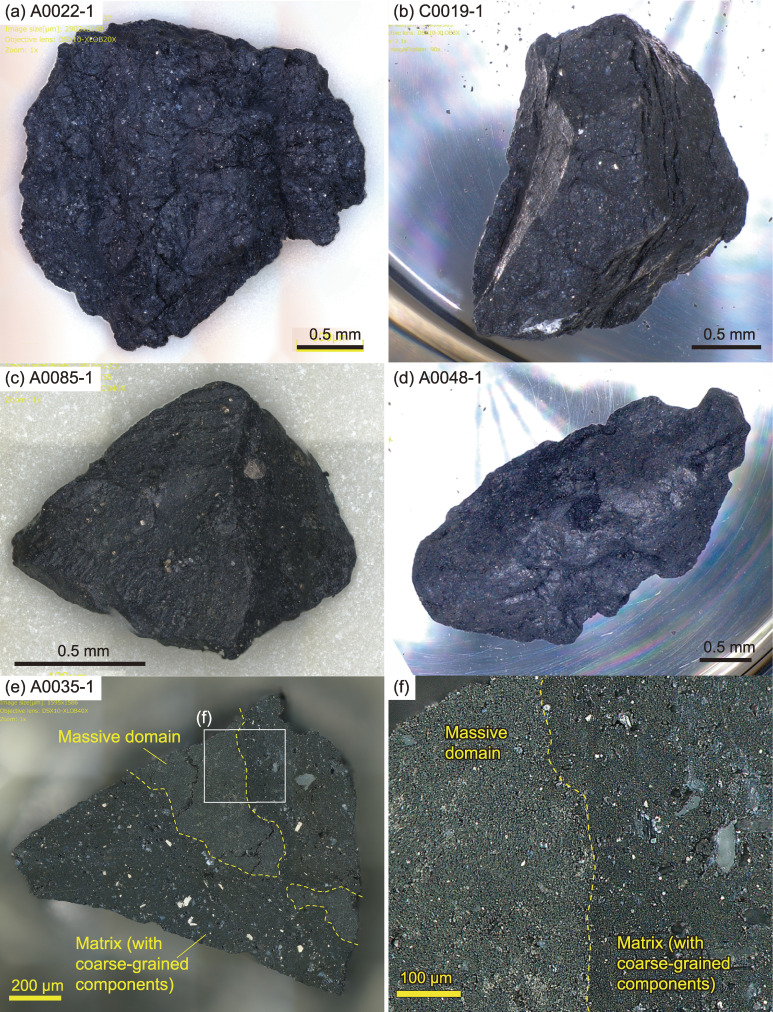Figure 1.
Optical microscope images showing the surface and interior features. (a) A grain with a rugged and finely-cracked surface morphology. (b) A comparatively solid grain with planar fractures. (c) A solid grain with a smooth surface morphology. (d) A solid grain with a curved and smooth surface morphology. (e) The internal texture on the flat surface of A0035-1 prepared by ultra-microtome. The particle is characterized by components up to several 10’s of µm in size, which are encapsulated in a fine-grained ‘matrix’ that is dominated by phyllosilicates. A unique distinctive domain is present within A0035 (surrounded by dashed lines). The domain is massive in nature with more fine-grained components than the surrounding areas and includes abundant Fe-sulfide and no coarse-grained components. As such, this domain is termed the ‘massive domain’. (f) An enlarged view of the rectangle in (e). The massive domain is separated by a curved boundary (dashed lines) from the surrounding matrix.

